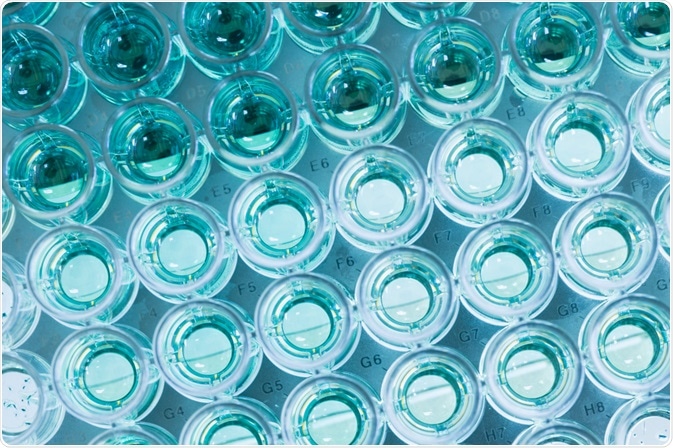Assays are scientific test systems developed for the purpose of evaluating the effects of chemical compounds on target biological processes. These can be cellular, molecular or biochemical, with the goal of furthering drug development and toxicity testing.

Lab Photo | Shutterstock
Assay development goals
Assays need to be specific for their research purpose, be that quantifying cellular levels of specific proteins, identification of potential new drug molecules, or quantitative measurements of levels of gene expression. Commonly used assays include enzyme-linked immunosorbent assay (ELISA) for detecting and quantifying peptides, proteins, antibodies, and hormones.
Almost every company focuses on developing assays based on feedback from the research community. The first step tends to be high-throughput small molecule screening, which shows probes suitable for exploring biological processes or candidates in drug development. Assays can use a variety of detection systems, such as absorbance, fluorescence, radioactivity or mass spectrometry.
What are key aspects of assay development?
When developing an assay, it is important to keep in mind the entire workflow from sample preparation to data quality analysis, not just the assay itself. Such considerations include choice of molecule to assay, the parameter to assay, the source of the molecule, and specifics of the assay itself.
Different assays require different considerations. For example, it should be deliberated before development whether the assay should target the quantity of a specific molecule that is present, the biological function or gene expression levels. Some studies may require all three assays to be developed, as all these assay techniques would provide different (but nonetheless complimentary) information.
The source of the molecules of interest is of particular importance to sample preparation. For example, the molecule may be obtainable in body fluid, an experimental animal, or from cells cultured in vitro. Apart from sample preparation, the source dictates the quantity and availability of the sample. The source can therefore have several downstream effects when developing various assays.
Once the molecule of interest has been selected and its source has been considered, the assay parameter of interest needs to be carefully chosen. The include parameters such as specificity, sensitivity, robustness, reproducibility and analysis of the assay.
Among those, the specificity is of key importance to the assay. Certain types of assays (for example HPLC based assays) produce peaks at different retention times. Researchers need to be able to decide if the peak belongs to the molecule of interest, or a different molecule that co-elutes with the molecule of interest.
Similarly, specificity can be affected if other enzymes in the sample can affect the event researchers wish to study, such as a phosphorylation event. This can usually be solved by including an additional step in sample preparation, but other factors must be considered as well.
Assay and screening techniques
Quantitative high-throughput screening (qHTS) is a process in which every compound within a large chemical library is tested at several concentrations. The quantitative aspect allows it to integrate the dose-dependent relationship with the speed and accuracy of conventional high-throughput screening.
Matrix combination screening is another high-throughput method to test vast quantities of drug-drug pairs for synergistic, additive, and/or antagonistic activities. This screening method in particular is convenient for exploring potential therapeutic combinations.
Drug discovery endeavors typically employ high-throughput assays, which in turn often use fluorescent and luminescent detection systems. Such systems are able to be automated to a large extent, and can then carry out a large number of assays.
Label-free cellular assays are growing in popularity and becoming much easier to develop. Such assays make use of biophysical detection methods to avoid the chance of creating artifacts by the presence of the detection system.
An example of this is a commonly used bioluminescent detection molecule called ‘firefly luciferin’, which is a partial agonist of GPR35 and can thus complicate interpretation of pharmacological data. This serves as a reminder to consider compound interactions when designing assay techniques.
Further Reading
Last Updated: Nov 20, 2018